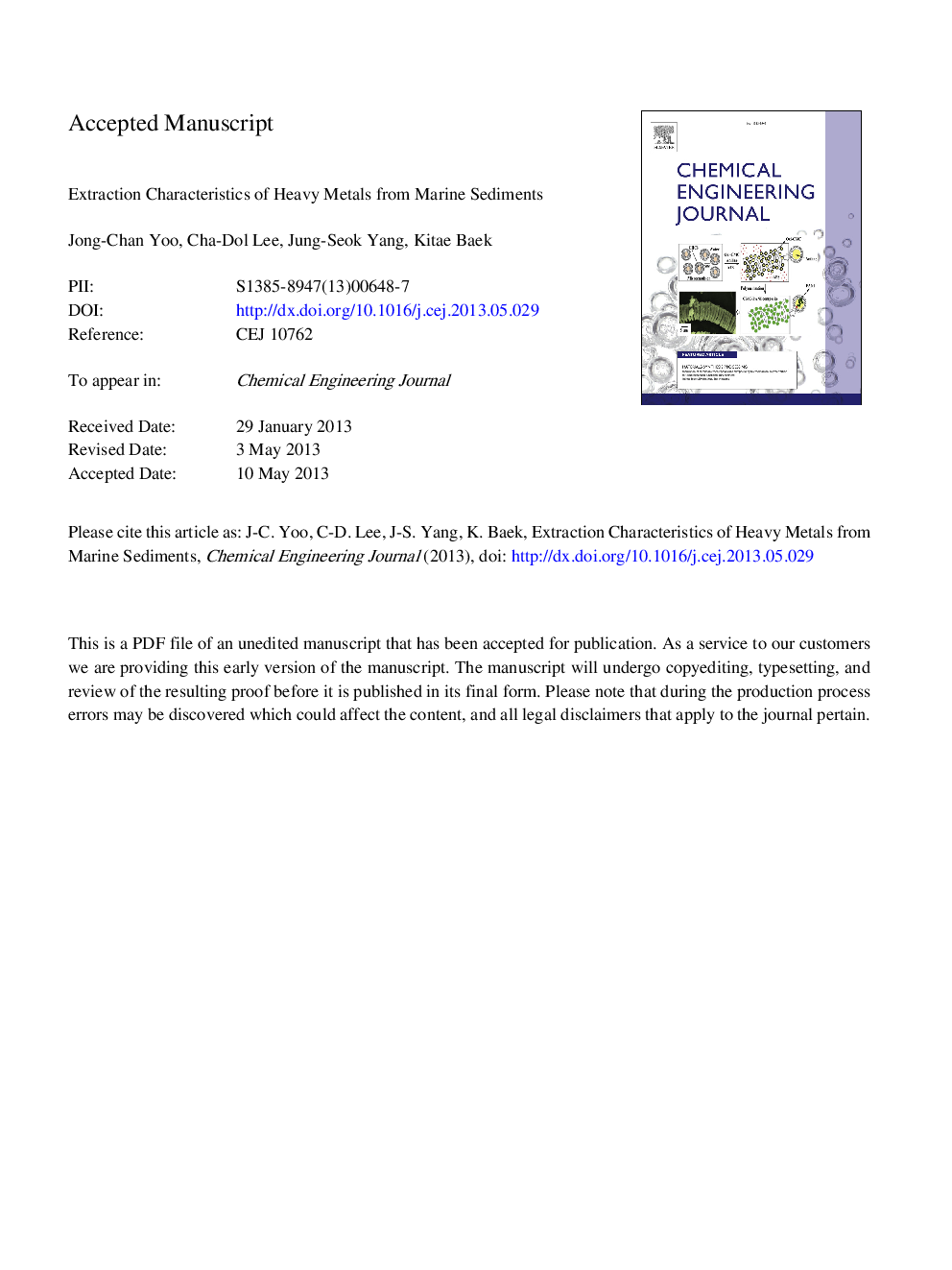| Article ID | Journal | Published Year | Pages | File Type |
|---|---|---|---|---|
| 6587435 | Chemical Engineering Journal | 2013 | 32 Pages |
Abstract
In this study, the feasibility of a washing process to extract Cd, Cu, Ni, Pb, and Zn from three real dredged marine sediments (Namhang (NH), Bangeojin (BE), and Haengam (HA) bay sediments, South Korea) were investigated using various washing agents (ethylenediaminetetraacetic acid (EDTA), NaCl, HCl, sodium citrate, and HNO3). Even though the removal efficiencies of heavy metals were not high, which is thought to be largely due to the high concentrations of Fe and Ca, EDTA was a more efficient extraction agent for heavy metals compared to the other agents, because EDTA formed more stable complexes with metals. EDTA removed: 30%, 43%, and 9% of Cu; 48%, 66%, and â8% of Pb; and 31%, 60%, and â14% of Zn from NH, BE, and HA sediments, respectively. Additionally, fractionation analysis showed that EDTA converted the strongly bound fractions of Cu and Pb to an exchangeable fraction. Based on the experimental results, the washing technique using EDTA is determined to be efficient for the removal Cu, Pb, and Zn from NH and BE sediment samples. On the contrary, residual concentrations of heavy metals were not decreased from HA samples compared to extraction with washing solution because of the high content of fine particles and organic matter in samples. Furthermore, the fractionations of metals highly influenced the chemical extraction of metals in sediments, and the fractionation changes after chemical washing increased the total extractable amount of metals. As a result, the fractionation change caused changes in the bioavailability and potential mobility of metals.
Related Topics
Physical Sciences and Engineering
Chemical Engineering
Chemical Engineering (General)
Authors
Jong-Chan Yoo, Cha-Dol Lee, Jung-Seok Yang, Kitae Baek,
